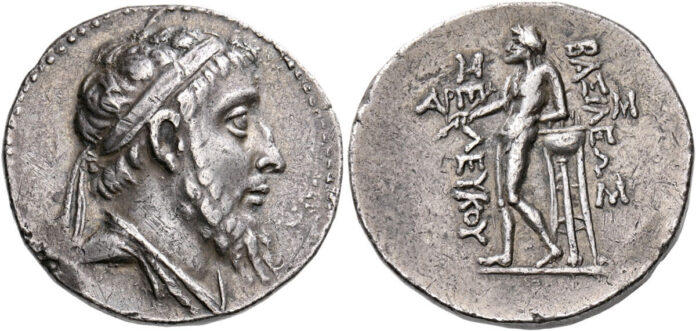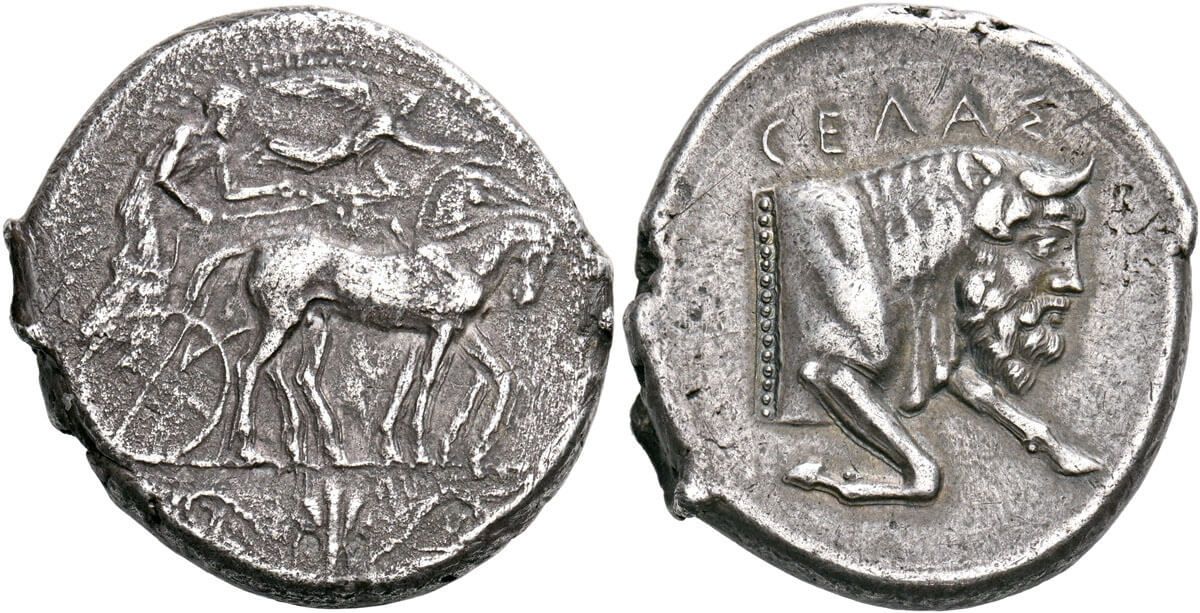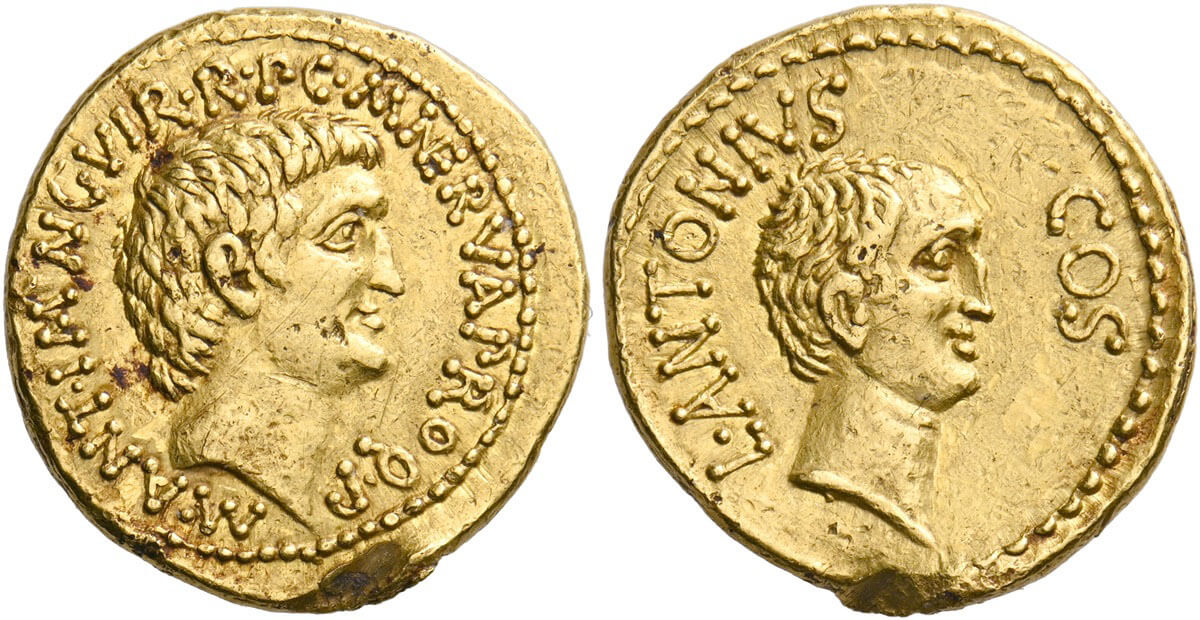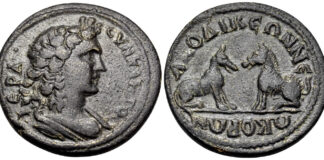Nomos 22 Is Now Online
Well, better late than never! Nomos Auction 22, which will take place on 22nd June 2021, is now online: it contains 441 lots, ranging from a potin piece of the Celtic Meldi to a gold Mohur from Calcutta; the catalogue itself is being printed and will be arriving with our clients all over the world very soon, indeed. But now, for our first newsletter on the sale, we are going to present one very extraordinary coin:
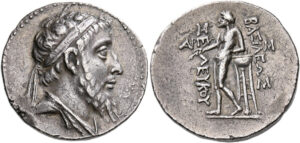
So, here is lot 246 (estimated at 42,500 CHF), the extremely rare and extremely important tetradrachm of Seleukos II, one of the greatest and most desirable rarities in the entire Seleukid series. It was struck c. 227-226 BC at an uncertain mint on the coast of eastern Cilicia (Mørkholm’s attribution of this issue to Sardes, EHC p. 124, unfortunately has to be discarded; see SC I, I, p. 251). This is a famous coin: it was once in the collection of J. W. Garrett, who bought it through Spinks in June 1925 at Naville X, the sale of the extensive Seleukid collection of the late Baron Alexander von Petrowicz. Given the time it took to prepare a collection for auction in the 1920s, including making casts of all the coins so that they could be photographed, writing the manuscript, type setting, printing and shipping, it may well be that the coins had already been consigned in 1924; especially since one of the few things we do know about A. von Petrowicz was that he died at some time in early 1925 (or at least prior to the printing of Naville X, which could not have been later than late March or early April 1925, since in the introduction he is described as being the late…; he was born in 1857). It should not be forgotten that just the year before the Petrowicz sale Naville sold the collection of C.S. Bement, the Philadelphia collector who died in 1923, but who had carefully arranged for the sale of his collection in the years before he died (his coins were certainly already in Geneva prior to his death). Aside from that, we know Petrowicz published a very important volume on his Parthian coins in 1904 and, according to the 4th edition of the Gnecchis’ Guida from 1903, he lived at Fichtegasse 2 in Vienna I (in the Innere Stadt).
The real mystery about this coin is the portrait: why is Seleukos II bearded? Bearded portraits actually appeared on six issues of Seleukos II. Two, bearing diademed heads with short, highly mannered and very Greek beards are on tetradrachms from Nisibis (SC 749-750) and Susa (SC 788), which are dated to c. 228 BC. These portraits are similar, even very similar, to those of Philip V of Macedon dated to c. 220-211 BC, Nabis of Sparta dated to c. 196 BC, Mithridates III of Pontus, struck shortly after 220 BC, Prousias I of Bithynia, struck beginning in 210 BC, and the Seleukid usurper Achaeus, struck soon after 220 BC.
Two other issues, with the king given a short, pointed beard, are on bronzes attributed to Susa and Ecbatana (SC 797-798 and 822-824) and are also dated c. 228 BC; the portraits on these bronzes look quite different to the one we have here (in addition the portraits on the bronzes from Susa are completely unlike those on the tetradrachms cited above).
Finally, we come to the two final issues, the present coin, with a diademed and draped bust with a rather long, pointed beard (known from four tetradrachms, of which this piece is one, and a drachm: SC 685-686, attributed to an uncertain Cilician mint in c. 227-226 BC and a bronze issue of c. 228 BC (SC 711-712), also with diademed and draped busts, attributed to a mint in the neighbourhood of Antioch. What is notable is that the portrait found on the large bronze, SC 711, is almost exactly the same as that on our tetradrachm, albeit somewhat more mannered.
These bearded portraits have long been explained as being related to the campaign of Seleukos II against the Parthians in 228 BC: i.e., the Seleukid king’s beard is a signifier for his victory over the bearded Parthians. This sounds reasonable, but aside from the bronzes struck in Susa and Ecbatana, it is wildly improbable! Why? The main reason is that for the bust or head of a bearded ruler to be an effective symbol for the victory over a bearded enemy, bearded portraits of that enemy, in this case the Parthians, should be familiar to the intended users of the victor’s coins; and the best way for that to happen would be through the enemy’s coinage and the bearded portraits of the enemy rulers appearing on it. But at the time of Seleukos II’s bearded portraits c. 228-226 BC, there were no bearded portraits on Parthian coins: the first Parthian coins bearing a head or bust of a bearded king were issued over 80 years later, under Mithradates I, beginning in c. 148 BC! Also, if this portrait was designed to commemorate victory over the Parthians, why was it produced in two minor mints, one in Cilicia and one somewhere near Antioch, rather than more extensively at the main mint in Antioch? In addition, at this uncertain Cilician mint, the diademed, bearded and draped busts of Seleukos II, directly follow some equally rare issues of his brother, Antiochus Hierax, which also have a diademed, bearded and draped portrait (SC 914); and Hierax had absolutely no connection with Parthia! So what can we conclude? The probable answer is that the bearded portrait has nothing to do with a Parthian campaign, it has to do with a fashion for beards that may well have begun with Seleukos II, and then proceeded to spread elsewhere; might it have been meant to show him, and those rulers who followed, as a seasoned military commander?
Some other highlights:
View all lots of Nomos 22 on Nomos website.
Find further information about Nomos.




